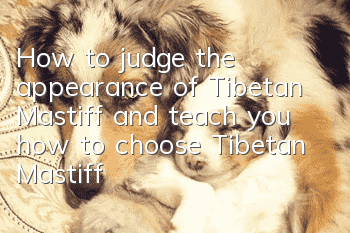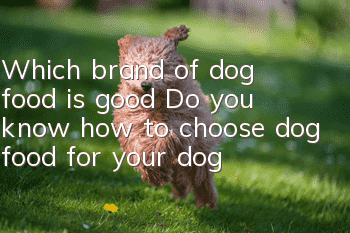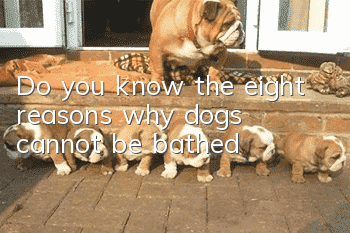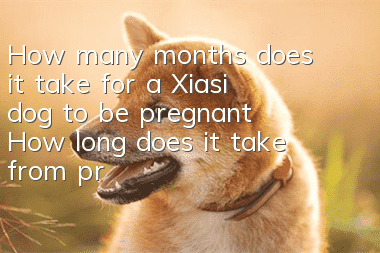How to judge the appearance of Tibetan Mastiff and teach you how to choose Tibetan Mastiff

Tibetan Mastiff’s head
1. Big lion head style: above the forehead (the position of the skull), there are more than 5 cm of erect hair, and the ears are 10cm-15cm long; the neck The surrounding mane is erected and the hair is 20cm-40cm long; it is as majestic as a lion.2. Little lion head style: also called medium-long hair, the mane around the head and neck is shorter, and the head wind is slightly smaller.
3. Tiger shape: medium or short hair, no bristles on the top of the head and neck or the bristles are too short to form a tiger shape. But the head is generally larger than that of a lion-shaped mastiff, with a wide mouth and short nose, and it moves and lies like a tiger. Temperament: Full of territorial awareness and strong autonomy. Tiger-shaped Tibetan Mastiff
Physique of Tibetan Mastiff
1. Big head, long hair, shape like a lion, body like a tiger, strong character, strong and brave, and still retains wild nature , strong disease resistance. Protect territory and be good at attacking. They are highly hostile and lethal to all strangers and intruders, but they are absolutely loyal and obedient to the masters who feed them.2. A Tibetan Mastiff can not only guard the home and courtyard, but also protect the entire village or manor. It is said that on the Qinghai-Tibet Plateau, Tibetan Mastiffs can not only tear apart wolves and leopards, but also guard cattle and sheep. It can also predict avalanches and earthquakes, risking one's life to save the savior. Therefore, Tibetan Mastiff is now very well-known internationally. In the international market, the value of high-quality Tibetan Mastiff is very expensive. Tibetan Mastiffs are loved by people all over the world and are recognized as the best mastiffs in the world. We are all proud to own a pure Tibetan Mastiff. The Tibetan Mastiff has become a symbol of security and wealth, and it is also the glory of the entire nation.
Tibetan Mastiff's coat color
1 Black, pure black with no stray hairs, there may be a few white spots under the neck and chest2. The brown-red hair is cow hair red or maroon red, with some hair tips slightly blackened
3. 3. Iron-coated with gold. Black back and yellow legs, with two yellow spots like copper coins above the eyes (or black back with red legs, two Tibetan Mastiff dots with brown-red twine-like dots above the eyes).
4. Pure white. The whole body is white, also known as snow mastiff.
5. Yellow Mastiff. Coat colors include grass yellow, brown yellow, golden yellow and apricot.
6. Gray. Head: The head and face are broad, the skull is broad, and the distance from the upper part of the dog's nose to the back of the head is large and long. From a distance, it looks like a square head, but in fact it is a dome. The nose tube is wide, full and square.
, the red fleshy fundus of the lower eyeball is exposed and is called a hanging eye.
(1) Flat mouth: It means that the upper part of the mouth is hanging onThose with a droopy lower mouth are those with a flat mouth.
(2) Mouth hanging: When the mouth is closed, the upper lip skin hangs about 5 cm below the mouth, and the middle and rear part of the lower lip skin is folded and drooped.
(3) Wrapped mouth: When closing the mouth, the top and bottom look like a wrap. Back: The chest should be broad and the waist should be long and wide.
(4) Teeth: Tibetan mastiff teeth are carnivorous animal teeth, unlike ordinary dogs, which are omnivorous animal teeth. The Tibetan Mastiff's two upper canine teeth have blade-like blades on the back side, called tooth knives. The teeth are triangular, similar to the teeth of wolves, lions, tigers, and leopards. It is the only "domestic dog" that retains the original characteristics of the carnivore "canine". Due to long-term evolution, the molars of ordinary dogs have turned into the grinding molars of omnivores. Although the Tibetan Mastiff will also eat non-carnivores, it retains the unique cutting molars of carnivores. Its teeth are clearly distinguishable from other dogs. logo.
2. Ears: Triangular in shape, naturally drooping, large ears, close to the front of the face.
3. Mouth: The upper front teeth and the lower front teeth are tightly combined, and the lower lip is square. It can be divided into flat mouth, hanging mouth and package mouth.
Tibetan Mastiff’s limbs
1. Claws: The foot plate is large, symmetrical, long from the upper part of the claw to the upper back of the dog leg It has crimson hair and its claws are tightly packed like tiger claws. 2. Tail {commonly known as chrysanthemum tail}: medium-long, the length cannot exceed the ankle joint, naturally rolled up, and can be divided into oblique chrysanthemum and flat chrysanthemum.
(1) Oblique chrysanthemum: The tail hair is long, rolled up tightly, and rolled diagonally on the back of the Tibetan Mastiff.
(2) Flat chrysanthemum: The tail hair is long, the root of the tail is tightly curled, and the flat curl is placed on the top of the back, looking like a big chrysanthemum.
(3) Sickle shape: Although the dog's tail is lifted up, it cannot be rolled tightly, like a scimitar; some are lifted upright into a column facing the sky.
3. Shoulder height: divided into three categories: giant mastiff, standard mastiff, and small mastiff.
Random articles
- When is the best time to neuter a Poodle? What are the benefits and disadvantages of neutering a Poodle?
- Why does Teddy have blood in his stool? What should I do if Teddy has blood in his stool?
- What should you pay attention to when raising a Labrador? Have you paid attention to these if you want to raise a Labrador?
- Ranking of the top ten vicious dogs in the world. These dogs are definitely not suitable as domestic dogs.
- Do you know what Corgi likes from its owner?
- How long does it take for a Poodle to get pregnant? How long does it take for a Poodle to get pregnant?
- What should I eat when my dog is pregnant? What should I pay attention to when feeding my dog during pregnancy?
- Five naughty signs of corgis. How many corgis are there in your family?
- Can dogs eat ice cream? What to feed your dog in summer to relieve heat
- Why can’t Labrador eat chocolate? What should I do if Labrador eats chocolate?



